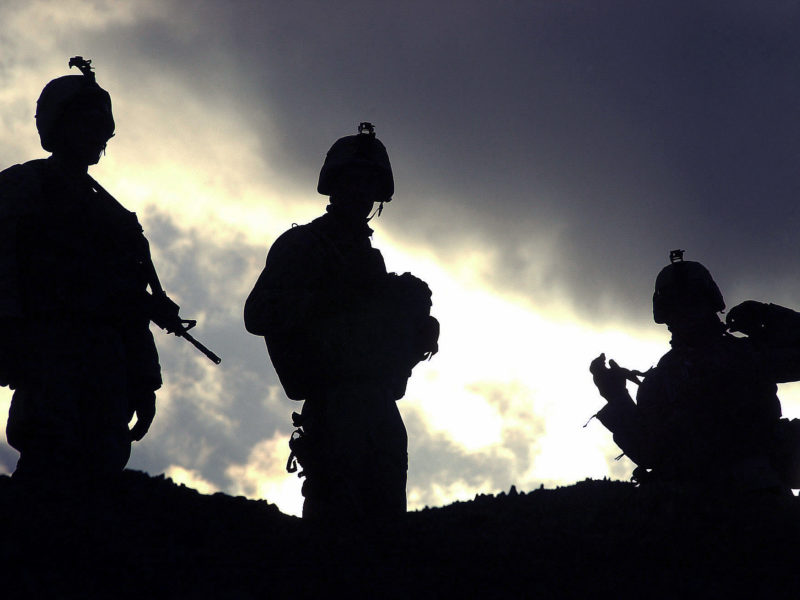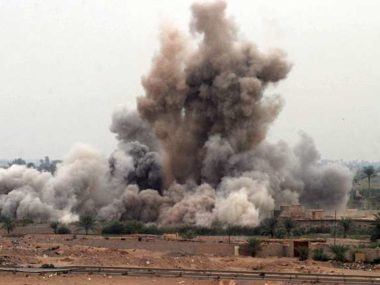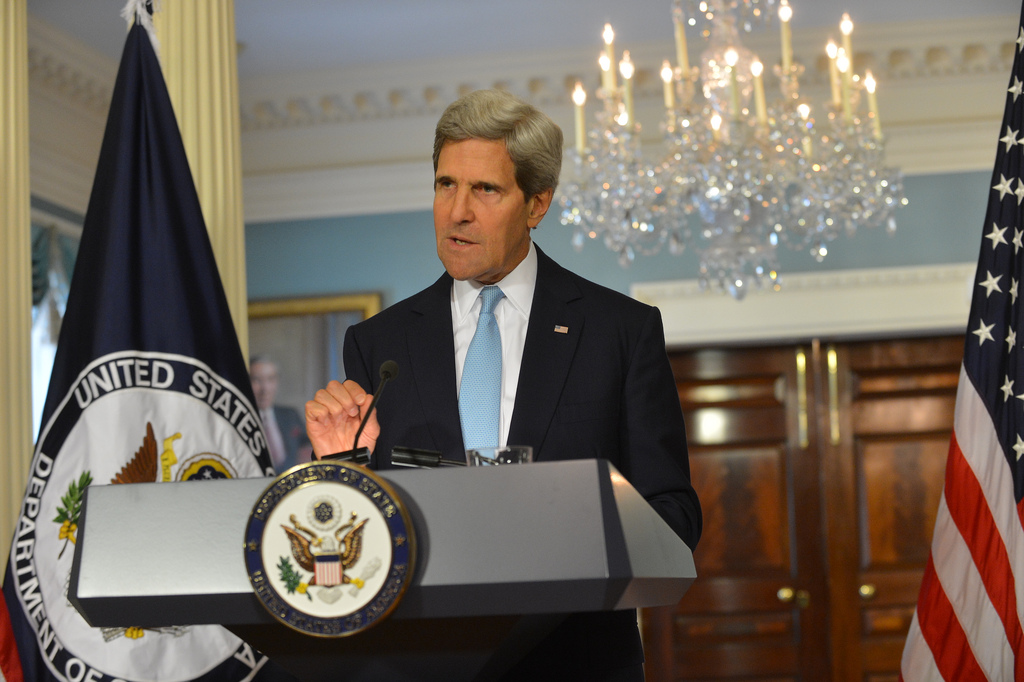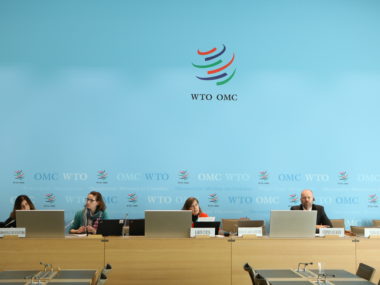By Navin Bapat
On August 15, 2021, almost twenty years after the 9/11 terrorist attacks, the Taliban recaptured Afghanistan from the American-supported government led by Ashraf Ghani. Afghans pushed to get on American transport planes to evacuate, conjuring images of the US evacuation of Saigon at the end of the Vietnam War. Others, afraid of Taliban retaliation, turned to social media to plea for help. Meanwhile, in Kabul, militants paraded in front of the evacuated US embassy, signifying the Taliban’s total victory.
What caused such a rapid collapse? According to President Biden, “Afghanistan political leaders gave up and fled the country. The Afghan military collapsed, sometimes without trying to fight.” The president’s explanation is that the US was not at fault. Rather, the blame belongs to Afghanistan’s government and its military. Biden added, “American troops cannot and should not be fighting in a war and dying in a war that Afghan forces are not willing to fight for themselves.“
While it may be tempting to place the blame at the feet of the Afghans, it is worth examining the situation more closely. In terms of fatalities, the US lost 2,445 soldiers and 1,788 contractors from 2001 to the present. By contrast, the Afghan security forces lost approximately 59,000 troops in the same period. Since 2018, the Afghan security forces lost about 30,000 soldiers, whereas the US lost 46 soldiers and 65 contractors. Based on these data, it is difficult to make the case that the Afghans were unwilling to fight for themselves.
What drove the Taliban victory? There are three key factors. The first and most influential is the way in which the political calculus of American politicians interacted with the public’s fear of terrorism. Following the shock of 9/11, nonwhite terrorists were portrayed as irrational, bloodthirsty fanatics plotting to destroy the US homeland. There is little evidence to support these claims: most terrorist groups are internally dysfunctional, do relatively minor damage, and collapse within ten years without accomplishing their strategic objectives. There is also evidence that many terrorist groups behave strategically and therefore rationally and can respond to offers to negotiate, particularly if they have an external host or patron.
Yet, no president argued against the claim of the irrational terrorist. They instead claimed the US would need to destroy terrorist havens and reconstruct the weak states that host them—like Afghanistan—and that failing to do so would signal weakness, embolden fanatical terrorists, and lead to further 9/11 style attacks. The US would therefore pay any price to fight the war on terror. Unfortunately for the US, its partners in the war on terror were happy to play along.
This leads us to Pakistan, the second culprit and arguable winner of the Afghan war. Since both al Qaeda and the Taliban retreated to Pakistan after the US invasion, the US promised to provide Pakistani President Pervez Musharraf with military and economic assistance if he fought the Taliban in the north. The problem is that Musharraf had no intention of doing so. While the US sought to build a state that was strong enough to suppress the Taliban in its territory, Pakistan supported the Taliban to maintain its strategy of strategic depth. The strategic depth concept was that if India were to invade, the Pakistani military could retreat to the southern and eastern parts of Afghanistan. Pakistan would then begin guerrilla operations against Indian forces from these territories. A strong, functional Afghan state would prevent Pakistan from using this territory in the event of a total war with India. The US completely failed to understand Pakistan’s motivations or its double game in Afghanistan. Pakistan therefore used American support to bolster its military against India, allowed the Taliban to escalate violence, and subsequently demanded more resources to fight the Taliban due to growing violence.
The third culprit for the Taliban victory is Hamid Karzai and his government in Afghanistan. Empirically, we know that large amounts of foreign aid may cause government corruption. In this case, the amount of economic and military support to Afghanistan was enormous relative to the size of the population, and the Karzai government made itself wealthy by hoarding the resources pouring into the country. But resources would continue to flow only if the Afghan state appeared weak and under threat. As a result, Karzai never had an incentive to provide security to Afghanistan and instead concentrated on securing his followers in Kabul. Both Karzai and the succeeding Ghani government did little to stem the growing Taliban insurgency in the countryside, other than to fault the Pakistanis, claim vulnerability, and demand more assistance to fight.
Few policymakers discussed the systemic flaws in the US strategy, even as they became glaring in the mid-2000s. Instead, the US doubled down and continued to supply both Afghanistan and Pakistan with military aid while seeking to minimize American fatalities. Following the end of major combat operations in 2014, the US seemed content with maintaining a stalemate with the Taliban, even as Afghans continued to die in large numbers. This callous disregard for Afghan lives allowed policymakers to continue this policy, mitigate the small risk of terrorism, and avoid political fallout. The value of Afghan and Pakistani lives paled in comparison to assuaging Americans’ fears.
By 2021, due to the defeat of ISIS and the onset of the COVID-19 pandemic, terrorism ceased to be an issue of significant concern. Once the fear of terrorism subsided, the US threw the Afghans to the wolves, leaving them to fight a Taliban force armed by Pakistan. Facing this adversary and a public decision by the US to exit, members of the Afghan military struck deals with the Taliban to protect their assets and avoid conflict, much as bargaining theory would predict that they should.
President Biden blamed the Taliban victory on the Afghan army, which misses the point. This was an American war and an American failure. Fear of terrorism led the US to engage in a military adventure in South Asia without thoroughly analyzing the consequences of its policy and the perverse incentives it created. The US continued this adventure, even as the flaws became obvious, to avoid political fallout, despite the war costing thousands of Afghan and Pakistani lives, with little to show for it. Then, when Americans’ concerns about terrorism faded, the US exited, knowing full well that this would lead to violence. No amount of feigned ignorance or shaming the Afghan military should obscure these facts.
American influence in the region is now significantly diminished, but the US still has moral obligations, given that its effort to avenge 9/11 left a catastrophe in Afghanistan. First, the US can resist nativist impulses and admit as many Afghan refugees as possible, while encouraging other states to do the same. Second, the US should ensure proper care for its veterans. Finally, Americans can take a hard look at what allowed this to happen, rather than doing the easy thing and blaming Afghans for the failure. Americans should consider the reasons the US was fighting. Did these reasons justify the deaths of more than two thousand Americans, over one thousand coalition forces, and tens of thousands of Afghans and Pakistanis? We can only argue that abstract concepts such as “America’s reputation” or “signaling toughness” are worth thousands of lives if we minimize the humanity of those lost individuals. We should not.







4 comments
Illuminating piece. The Pakistan angle is particularly important–I’m surprised it’s not a more central part of the discourse on Afghanistan. However, the article you cited for the statement “large amounts of foreign aid may cause corruption” actually argues the opposite. Did you intend to cite something else? Intuitively, it seems true that the massive scale of aid did invite corruption, so I’m not necessarily disagreeing with that point.
Thanks so much! You’re correct, I put in a different link accidentally. It is now corrected. However, it is an important point that some empirical work suggest that the link between aid and corruption does not exist when using instrumental variables. I am still inclined to believe the relationship exists due to the abundant theoretical work suggesting that it does, such as Bueno de Mesquita and Smith (2009) empirical studies suggesting the relationship, including my own from 2011 and 2019, and in this case, significant qualitative evidence like the Afghanistan Papers. Thanks again for reading this!
Thanks so much! You’re correct, I put in a different link accidentally. It is now corrected. However, it is an important point that some empirical work suggest that the link between aid and corruption does not exist when using instrumental variables. I am still inclined to believe the relationship exists due to the abundant theoretical work suggesting that it does (see Bueno de Mesquita and Smith 2009), empirical studies suggesting the relationship, including my own (2011 and 2019), and in this case, significant qualitative evidence (the Afghanistan papers). Thanks again for reading this!
This is such an incredible article.